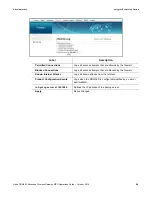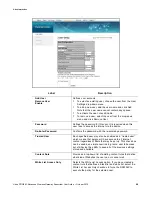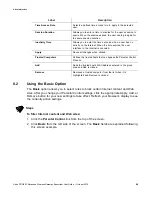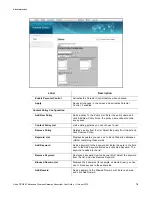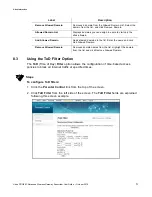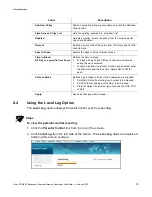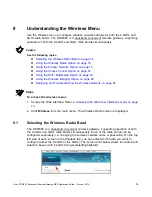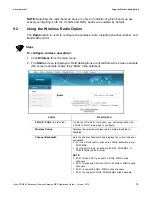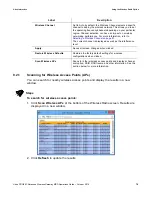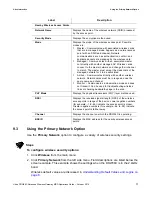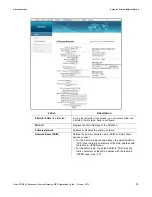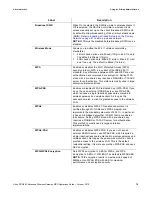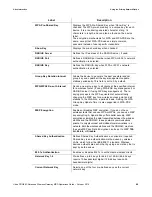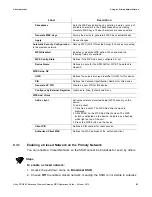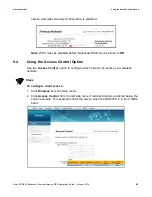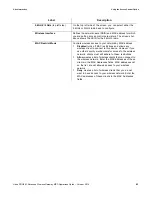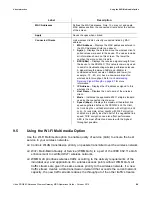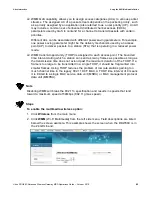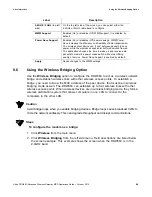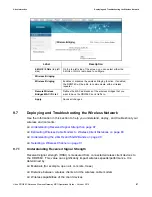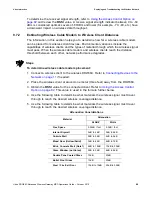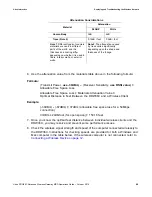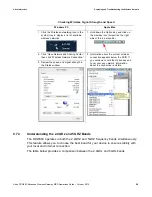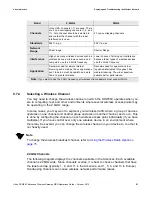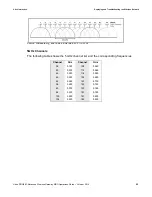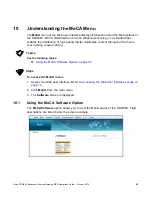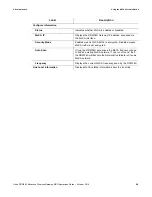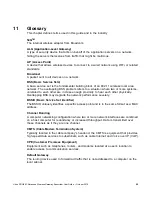
Ubee Interactive
Using the Primary Network Option
Ubee DDW36C Advanced Wireless Gateway MSO Operations Guide • October 2015
80
WPA Pre-Shared Key
Displays the WPA Pre-Shared Key when “Show Key” is
checked. The WPA pre-shared key is a unique key for each
device. It is a randomly generated character string, 16
characters in length, and can also be found on the device
label.
The encryption mechanisms for WPA and WPA-PSK are the
same, except that WPA-PSK uses a simple common
password instead of user-specific credentials.
Show Key
Displays the pre-shared key when checked.
RADIUS Server
Defines the IP address of the RADIUS server, if used.
RADIUS Port
Defines a RADIUS port number when WPA or 802.1x network
authentication is selected.
RADIUS Key
Defines the RADIUS Key when WPA or 802.1x network
authentication is selected.
Group Key Rotation Interval
Allows the device to generate the best possible random
group key and update all the key-management capable
stations periodically. This field is set to 0 by default.
WPA/WPA2 Re-auth Interval
Sends a new group key to all clients at the specified interval
for a wireless router (if using WPA-PSK key management) or
RADIUS server (if using WPA key management). The re-
keying process is the WPA equivalent of automatically
changing the WEP key for a wireless access point and all
stations in the WLAN on a periodic basis. Setting the WPA
Group Key Update Timer is also supported in WPA-PSK
mode.
WEP Encryption
Enables or disables WEP encryption. If you do not have
wireless clients that can use WPA or WPA2, you can use WEP
key encrypting. A higher bit key offers better security. WEP
encryption scrambles the data transmitted between the wireless
stations and the DDW36C to keep network communications
private. It encrypts unicast and multicast communications in a
network. Both the wireless stations and the DDW36C must use
the same WEP key. Data Encryption can be set to WEP
128-
bit, 64-bit,
or
Disable.
Shared Key Authentication
Defines Shared Key Authentication as optional or required.
Shared Key is an authentication method used by wireless
LANs, which follow the IEEE 802.11 standard. Wireless
devices authenticate each other by using a secret key that is
kept by both devices.
802.1x Authentication
Enables or disables 802.1x to authenticate wireless clients.
Network Key 1-4
Pre-defines up to 4 keys for 64-bit or 128-bit (64-bit keys
require 10 hexadecimal digits) (128-bit key require 26
hexadecimal digits).
Current Network Key
Selects one of the four pre-defined keys as the current
network key.
Label
Description

